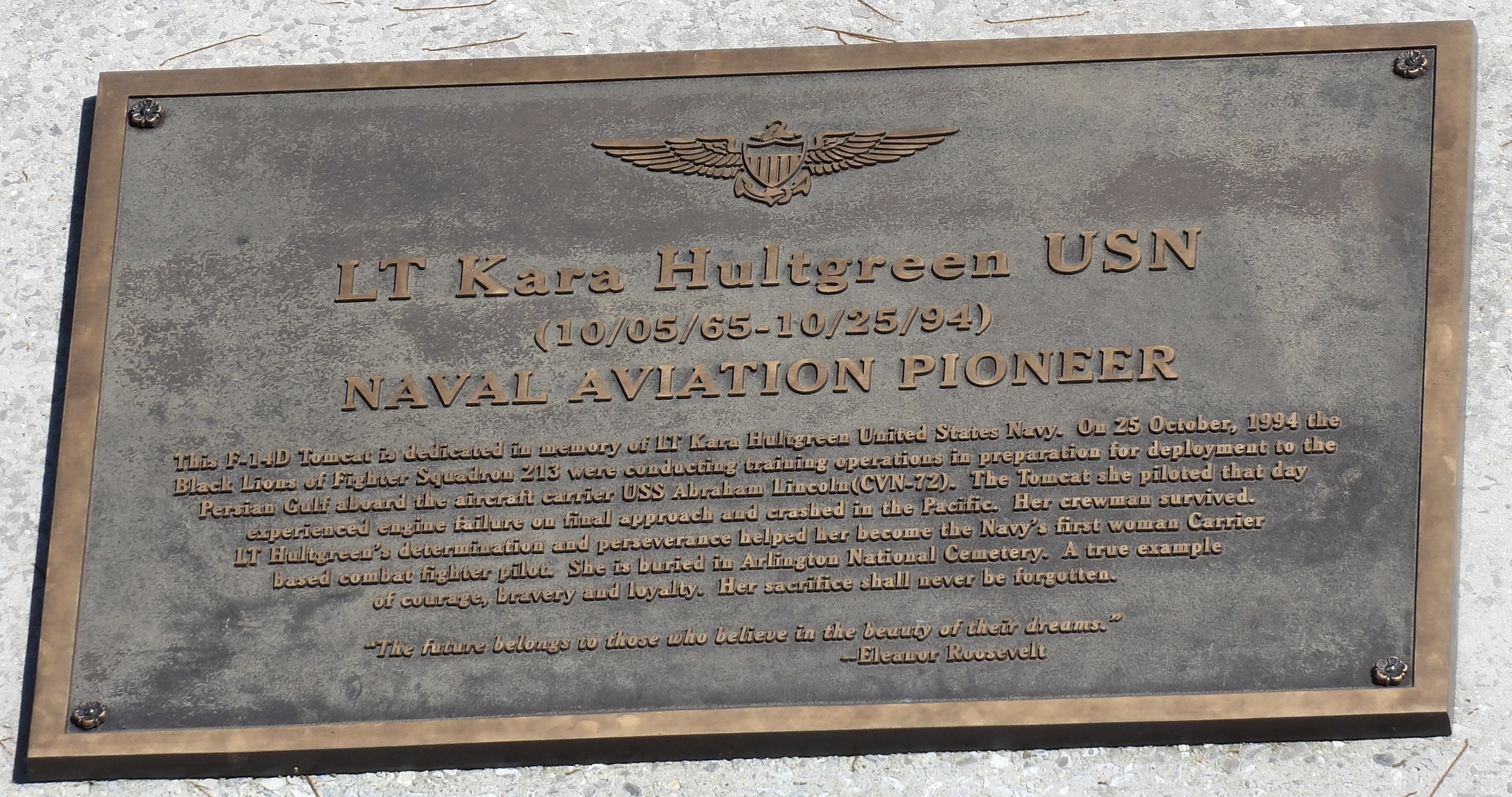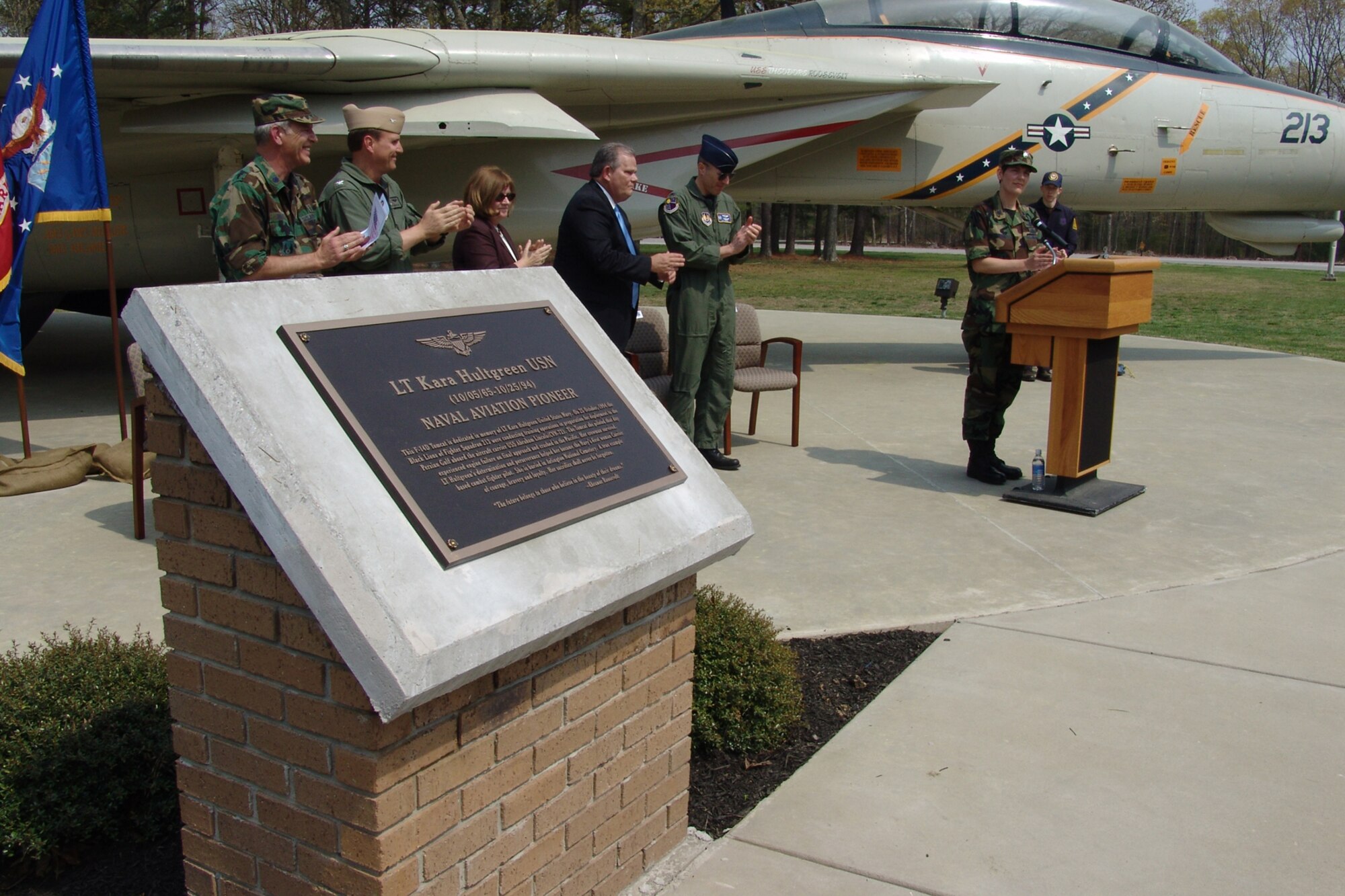Lt. Kara Hultgreen - We use cookies and other tracking technologies to improve your browsing experience on our site, display personalized content and targeted ads, analyze site traffic and understand where our audience comes from. For more information or to unsubscribe, please read our cookie policy. Please also read our Privacy Notice and Terms of Use, effective December 20, 2019.
In the early 1990s, few corners of the military were as misogynistic as the world of fighter pilots. This is the story of the female naval officers who overcame this culture to fly the fearsome F-14.
Lt. Kara Hultgreen

By Katie Hafner and Sophie McNulty Updated July 1, 2022 at 7:00 a.m. M EDT Illustrations by Clark Miller for Epic
Former Lt. Commander Linda Maloney — Wombat
Share all sharing options for: Women wanted to fly planes in battle. Breaking this barrier will be the fight of their lives.
The F-14 Tomcat was a fighter jet Rorschach test. Some saw him as a clumsy monster. Others said he deserved a repulsive honor. Others compared the 25-ton jet to an elephant: huge, strong and stubborn. Whatever you called it, the F-14 was as storied as it was mighty. It reigned for years as the workhorse of the US Navy's air combat machines.
For Lt. Cara Holtgreen, the F-14 started as a consolation prize. The 29-year-old bigwig wanted to fly the F/A-18 Hornet, the smartest and newest member of the Navy's fleet. But after a few months of training, the F-14 won Holtgreen's heart. He considered it an unusual, complicated and humiliating shot.
Holtgreen lived in Solana Beach, California, half an hour north of Miramar Naval Base, where he went on the morning of October 25, 1994. He got up early that day. She was debating what to wear out the gate: khakis or her flight suit. Taking flight suits through the gate was frowned upon. But since he would have to change his clothes immediately, he decided to break the rule and go with the suit.
Iran Stages \
She was moved by the disconnection. The night before, she had brought her belongings to her room aboard the aircraft carrier USS Abraham Lincoln, including a beloved duvet that had become shriveled over the years. He loved to cuddle in it when he slept. "I'm going to the ship next week until November 9. It should be fun," he wrote in a letter to his father. "I'm also in the November issue of McCall's magazine."
Holtgreen was not the first woman to fly a Tomcat, but she was the first to fly one operationally and tactically, landing it on the flight deck of an aircraft carrier. And she was the first woman in the US Navy to qualify as a combat-rated jet pilot.
In the process of her first coup, the outspoken Holtgreen came to occupy a special place in the history of women in aviation. Also special was the particular plane Holtgreen was flying off the coast of San Diego that afternoon: it was one of the Tomcats that shot down two Libyan planes over the Gulf of Sidra in 1981. The incident was recreated in 1981.

That afternoon's mission: take off from Miramar, fly the Lincoln 50 miles offshore, and place 50,000-pound fighters aboard the ship to begin the 16-day detachment.
F 14 Tomcat
At 2:30 p.m. m., Holtgreen was on the runway with his favorite back seat, radar intercept officer Matthew Kalmish. Clem wasn't a lump, Navy slang for a flight first officer, but he wasn't exactly experienced. Holtgreen had fewer hours in the F-14 than Kelm, but almost twice the total number of flight hours. They shared eight of their last nine flights together and trusted each other.
Holtgreen was Lt. Neal "Waylon" Jennings' wingman in the two-plane flight. In the squadron's preparation room, Wheelon briefed the crews on the sortie. After completing a visual inspection of their aircraft, Holtgreen and Klem climbed into the F-14, buckled in, drove to the warm-up area near takeoff and gave Waylon the go-ahead. They were cleared to take off. Holtgreen started the engines to test them, and Clem checked rpm, turbine temperature, fuel flow, and other instruments. Everything looked good. Holtgreen gave Waylon another thumbs up.
Holtgreen pushed the throttle to the floor, and in what would become one of the most significant moments in women's aviation history, the plane exploded forward. In 10 seconds they were airborne. Holtgreen accelerated to 200 knots to join Waylon, and the pair of planes reached blue skies, the wind was 9 knots, a clear view of the coast and Catalina Island. Holtgreen turned southwest in the direction of the carrier. It was a perfect day to fly.
To appreciate what it was like to see a woman in the cockpit of a US Navy fighter jet in 1994, you have to understand that up until just 18 months earlier, there was only one job in the US government in which women could not legally serve: active combat. .
Hero Southwest Pilot One Of Navy's First Female Fighter Pilots
Women have fought for decades to break into the military. Before World War II, women could only enlist as volunteers, and often served as nurses or clerks. In 1943, the Women's Army Corps was created, allowing women to receive full army status for non-combat positions. Five years later, in 1948, Congress passed the Women's Armed Forces Integration Act, a law that granted women permanent status in the Army, Navy, Marine Corps, and Air Force, while at the same time placing strict restrictions on the positions they held. can play Over time, the law was repealed piece by piece, until the last remaining restrictions were those that prohibited women from serving on ships and fighter planes.
During the 1980s and early 1990s, women lobbied hard for the right to serve in combat. And even after his success in 1993, some corners of the military remained openly macho, if not downright misogynistic, like the world of fighter pilots. In the months after Congress repealed the no-combat policy, any woman behind the wheel of an F-14 faced enormous scrutiny. "You don't necessarily want to be the girl everyone's talking about who blew it," Holtgreen said.
He was specifically referring to improperly flying an airplane. But, perhaps without realizing it, she meant much more than that. She meant that no woman in the military wanted to compromise her collective cause, through years of public advocacy and letter writing and trips to Washington to convince lawmakers to do the right thing; This meant that neither woman wanted to destroy what they had worked so long and hard to win.

But some of that generation of women who broke the glass ceiling of fighting had an even higher goal in mind. Holtgreen and others intended to become astronauts, and flying a fighter jet was a means to that end. But this was no ordinary stop on the way to NASA. In the process of chasing one dream, they found themselves living another.
Linda Maloney On Linkedin: #proudlysheserved #art #womenveterans
Kara Spears Holtgreen, who grew up in Ontario, Canada, spent most of her childhood running, skating and swimming more than any other child. as per
, the book Sally Spears wrote about her daughter, Cara liked to tell people that she grew up alone, since neither of her parents had much time for her. (
Holtgreen's meticulous account of his life and career was an essential source for this story.) Sally, a lawyer, and Kara's father, Tor, a pulp distributor, worked long hours, often leaving at dawn and not returning until after dinner one morning when Kara was little. , she ran away. No one noticed he was gone, and he barely noticed when he returned later that day.
Cara overstepped the bounds. When she was a little girl, she rode, but when the others stopped fighting, she continued, and she rode hard. As her mother wrote, "Kara lacked the shut-off valve that some people are born with that says enough is enough." I had to learn this social cue.
Confessions Of A Navy F 14 Fleet Pilot Turned F 5 Aggressor
Cara adored her older sisters, Kirsten and Dagny. She wanted nothing more than to be near them, and textbook big brothers, they wanted nothing to do with her. He started life affectionate and eager to please, but in the face of constant rejection, he began to change. One day when she was 9 years old, Kara followed her sisters into the living room. They told him to go, then closed the glass door behind them.
The older girls laughed and mocked her behind the heavy glass. Kara raised her arm in front of her like an offensive lineman throwing a block and ran straight for the door. When Dagny and Kirsten realized she wasn't going to stop, they backed off. Kara crashed through the glass and landed on her feet on the other side of the door. There were shards of glass everywhere, some hanging on the door frame. But Kara barely had a scratch.
Emerging from her impulsive act unscathed taught Kara what her mother called a "flawed and treacherous lesson": that she was invincible. As her sisters watched, speechless and scared, as Kara entered through the glass door, the older girls dominated their little sister. Until then,
Kara hultgreen, j kara, kara spears hultgreen, kara lashes, kara hultgreen crash video, sushi kara, kara hultgreen crash, hultgreen, kara diamonds, blanc kara, lt kara wade, kara jewelry

0 Comments